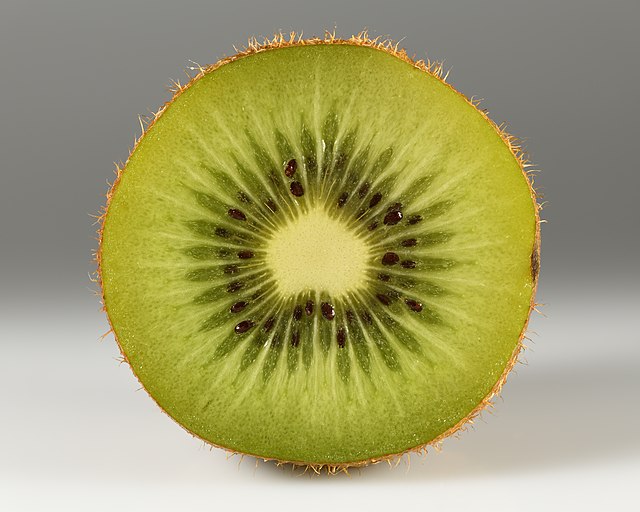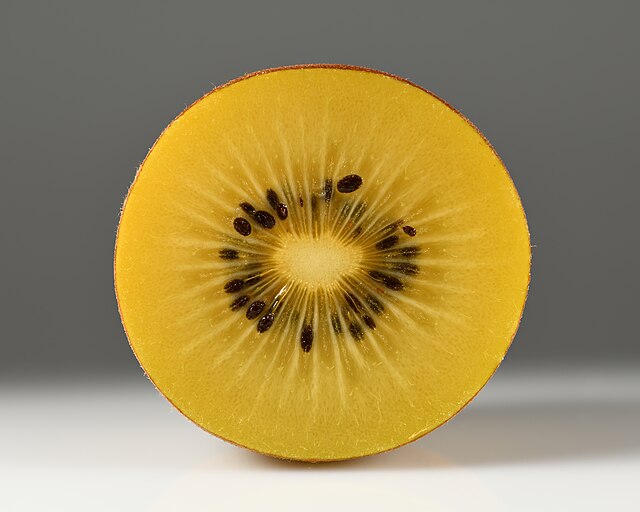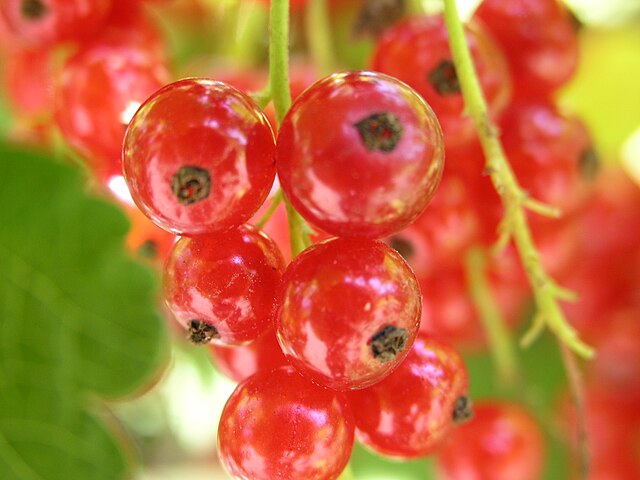Kiwifruit or Chinese gooseberry is the edible berry of several species of woody vines in the genus Actinidia. The most common cultivar group of kiwifruit is oval, about the size of a large hen's egg: 5–8 centimetres in length and 4.5–5.5 cm in diameter. It has a thin, fuzzy, fibrous, tart but edible light brown skin and light green or golden flesh with rows of tiny, black, edible seeds. The fruit has a soft texture with a sweet and unique flavour.
Kiwifruit by species A = A. arguta, C = A. chinensis, D = A. deliciosa, E = A. eriantha, I = A. indochinensis, P = A. polygama, S = A. setosa.
Kiwifruit cross section
Yellow kiwifruit
Close-up of Slice of Kiwifruit skin.
In botany, a berry is a fleshy fruit without a stone (pit) produced from a single flower containing one ovary. Berries so defined include grapes, currants, and tomatoes, as well as cucumbers, eggplants (aubergines), persimmons and bananas, but exclude certain fruits that meet the culinary definition of berries, such as strawberries and raspberries. The berry is the most common type of fleshy fruit in which the entire outer layer of the ovary wall ripens into a potentially edible "pericarp". Berries may be formed from one or more carpels from the same flower. The seeds are usually embedded in the fleshy interior of the ovary, but there are some non-fleshy exceptions, such as Capsicum species, with air rather than pulp around their seeds.
Redcurrants, a type of berry derived from a simple (one-locule) inferior ovary
Kiwifruit, a berry derived from a compound (many carpellate) superior ovary
Coffee cherries (Coffea arabica) – described as drupes or berries
Cross-section of a cucumber pepo (Cucumis sativus)








